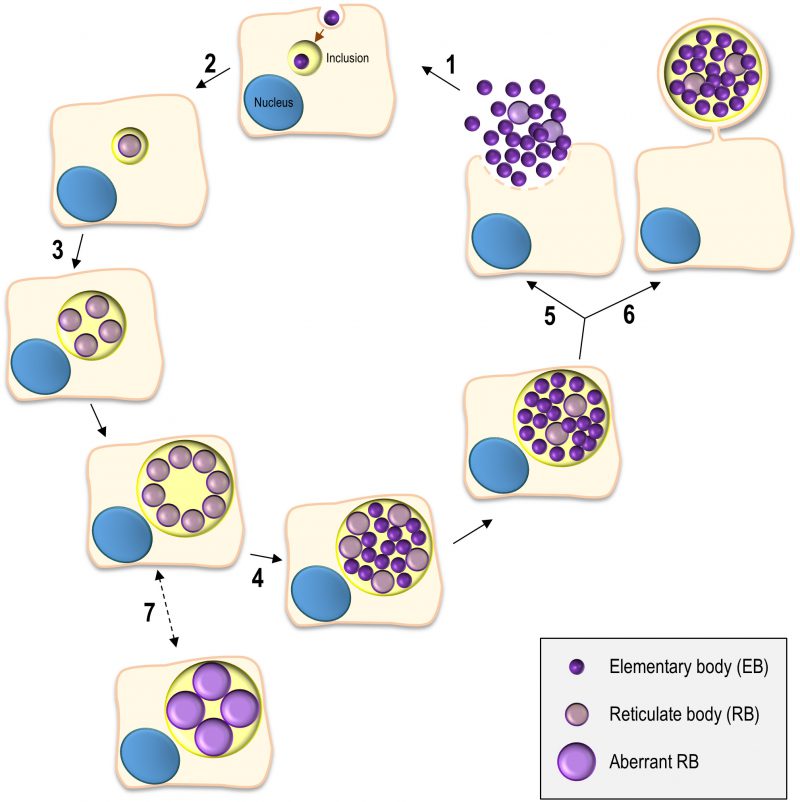Back to article: The multiple functions of the numerous Chlamydia trachomatis secreted proteins: the tip of the iceberg
FIGURE 1: The chlamydial developmental cycle. (1) Adhesion to host cells by C. trachomatis EBs released from previously infected cells triggers the delivery of T3S effectors that overall mediate actin rearrangements resulting in chlamydial invasion, inhibition of interaction with the endocytic pathway, and modulation of host cell survival and immune signalling (∼ 0-2 h post-infection). (2) The nascent inclusion segregates from the phagolysosomal pathway, the EBs differentiate into RBs, and the inclusion migrates along microtubules to a perinuclear centrosomal region (∼ 2-6 h post-infection). (3) The RBs start replicating exponentially leading to a large inclusion occupying most of the host cell cytoplasm (∼ 6-24 h post-infection). (4) The RBs re-differentiate asynchronously into EBs (∼ 24-48 h post-infection). (5) & (6) The EBs (infectious progeny) and a few lasting RBs are released by host cell lysis (5) or extrusion (6) (∼ 48-72 h post-infection). (7) Under certain stress conditions (antibiotics or cytokines) there is the reversible formation of aberrant RBs, a persister-like chlamydial form.

